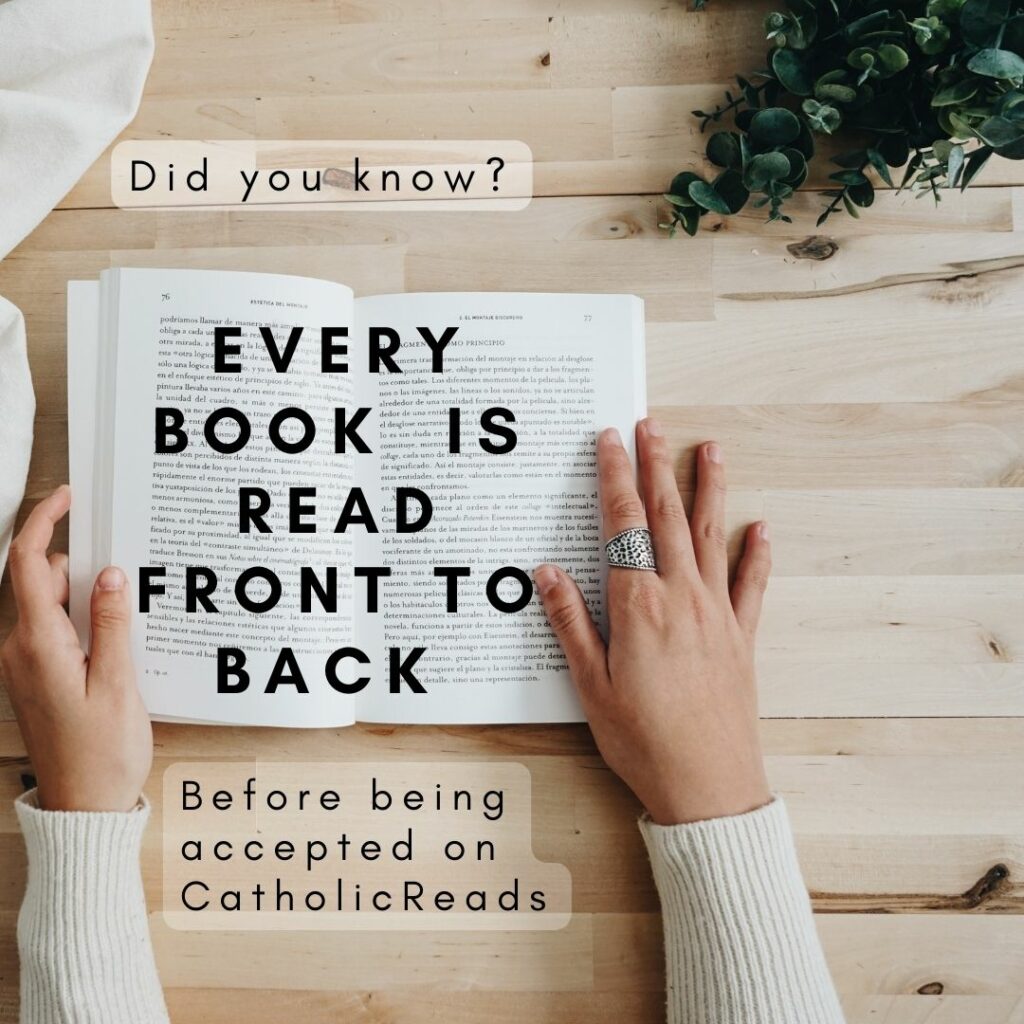A gardener plants a fruit tree in a forest. He tends to it and the tree makes him happy by growing tall and producing delicious fruit. The other trees get annoyed though when the fruit tree tries to get them to produce fruit for the gardener and they kill it by stealing all the nutrients from the soil around it and blocking the sun above it. When the gardener mourns his beloved the tree, the other trees grow sorry for their crime and “all quickly realized that it was neither looks nor power nor fun that they desired but love.” The gardener plants a new tree from the seed of the old and the whole forest becomes a beautiful orchard with enough food for the whole world. It’s a simple story on the surface, but bears Restaino and Alcomendas’s penchant for symbolism.
Subscribe to Catholic Reads & Get This Book & 100’s of Books like it for FREE
Restaino’s depth of symbolism and Biblical typology impressed me in his first book, but he’s really upped his game in The Fruit Tree. The story retains his trademark fairy-tale/fable atmosphere. Alcomendas has also improved drastically as an illustrator. The bright colors and deep contrasts made this book very enjoyable to read through.

I can see a lot of little kids being entertained simply by the pictures of this book even if they haven’t learned to read yet. This is beneficial because this team of authors continue their style of using symbolism and typology to teach children Christian and Catholic symbolism that will make them literate in the artistic traditions that make our very architecture proclaim the gospels. They’ve added a page to the start of the book telling kids to hunt for the symbols, like the wolf, which represents the crowd that crucified Jesus. The sun and birds, often symbols used to refer to the Holy Spirit, especially in stain glass windows, and the shell, traditionally used in Christian baptism ceremonies. I didn’t know the Christian significance of that last symbol myself, but there is a handy key at the back of the book for other parents learning Christian symbolism along with their children.
Explore all of Restaino & Alcomendas’s Books on Catholic Reads
There are also Bible verses to go with each image and if you read them along with the story they offer an even deeper reading that will teach both the child and the parent a lot about the Bible and the literary patterns within its books.
Because of its heavy use of symbolism and typology, this book would be very useful to families who are recent converts to Christianity or Catholicism. Besides just the facts of the dogma, Christianity has a rich artistic and symbolic tradition that can be difficult for outsiders to find learning resources for. This such book is an answer for that need.
OR
Subscribe to Catholic Reads & Get This Book & 100’s of Books like it for FREE
Genre: Children’s Books
Themes: The Gospel, Jesus, Baptism, Repentance, Good Works, The Bible, Christian symbolism, Christian Art, Mercy, The Holy Spirit, The Soul, Holy Door of Mercy, The Transforming Power of God, Works of Love, The Sacred Heart, Pentecost, Confirmation, Body of Christ, Holy Communion, Spiritual Nourishment, Trinity, God the Father, Jesus Christ
Author’s Worldview: Catholic
Audience: Children & Families with young children



